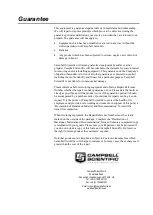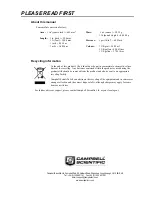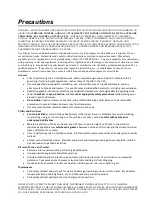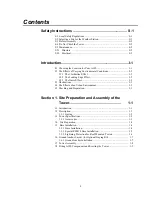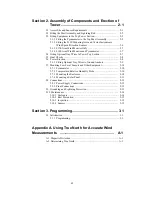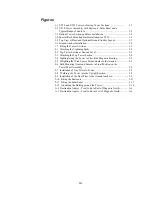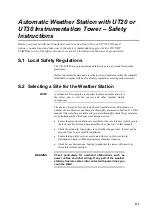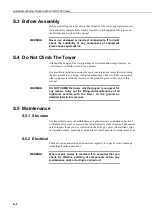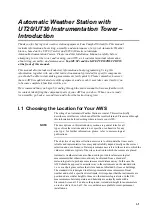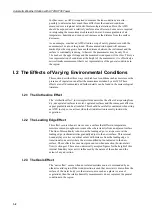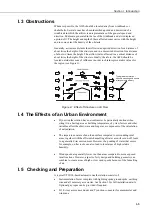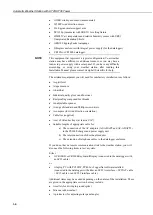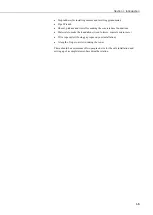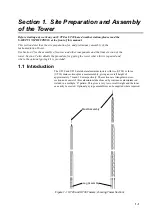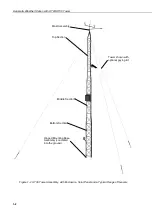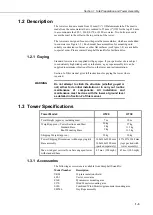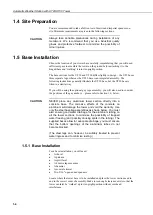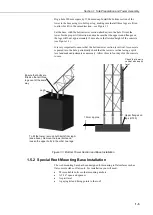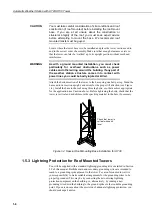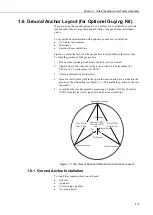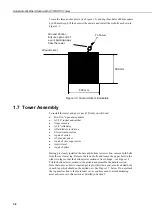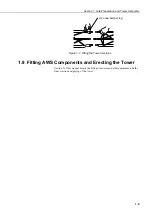
I-1
Automatic Weather Station with
UT20/UT30 Instrumentation Tower
–
Introduction
Thank you for buying your weather station equipment from Campbell Scientific. This manual
includes information about siting, assembly and maintenance of a typical Automatic Weather
Station, based on the UT20 (7 metre) and UT30 (10 metre) aluminium
Antenna/Instrumentation Towers. Please read this Installation Manual carefully before
attempting to erect the tower and/or using your AWS, as it contains important information
about siting, assembly, and maintenance.
You MUST read the SAFETY INSTRUCTIONS
at the front of this manual.
This manual also includes introductory information about programming. Using this
information, together with any other instruction manuals provided for specific components,
you should be able to start making measurements fairly quickly. Please remember, however,
that an AWS is sophisticated scientific equipment, and as such it may take some time for you
to become completely familiar with its use.
We recommend that you begin by reading through the entire manual to become familiar with
its content, identifying the component parts of your AWS as you do so. When you are ready
for assembly, go back a second time, and follow the instructions given.
I.1 Choosing the Location for Your AWS
The siting of an Automatic Weather Station is crucial. This section briefly
describes several factors which can affect the results obtained. Please read through
this information before deciding where to locate your AWS.
The descriptions in this introductory section are general rules for all
types of weather stations and are not specific or exhaustive for any
one type; for further information, please refer to meteorological
publications.
The objective of any data collection exercise is to obtain data that is accurate,
reliable and representative. Accuracy and reliability depend mostly on the correct
selection and use of sensors. Data representativeness refers to the extent to which the
values recorded are typical of the site or location in which the sensors are placed.
Automatic weather stations are often used to provide local meteorological
measurements that otherwise could only be obtained from a ‘standard’
meteorological site, perhaps some inconvenient distance away. In this case the
AWS should be exposed in a similar way to the instruments on the standard site,
i.e. over a short grass surface that is level and not shielded by trees or buildings.
The standard
site is designed to allow representative measurements of local
weather and not of a specific microclimate. It is important that the instruments are
positioned at a similar height to those on other meteorological sites; in the UK,
measurements of air temperature and humidity are normally made with a
Stevenson Screen at 1.2 m above the ground. A standard height for anemometers
on such a site is 10 m, but 2-3 m is considered acceptable for semi-permanent
installations.
NOTE



